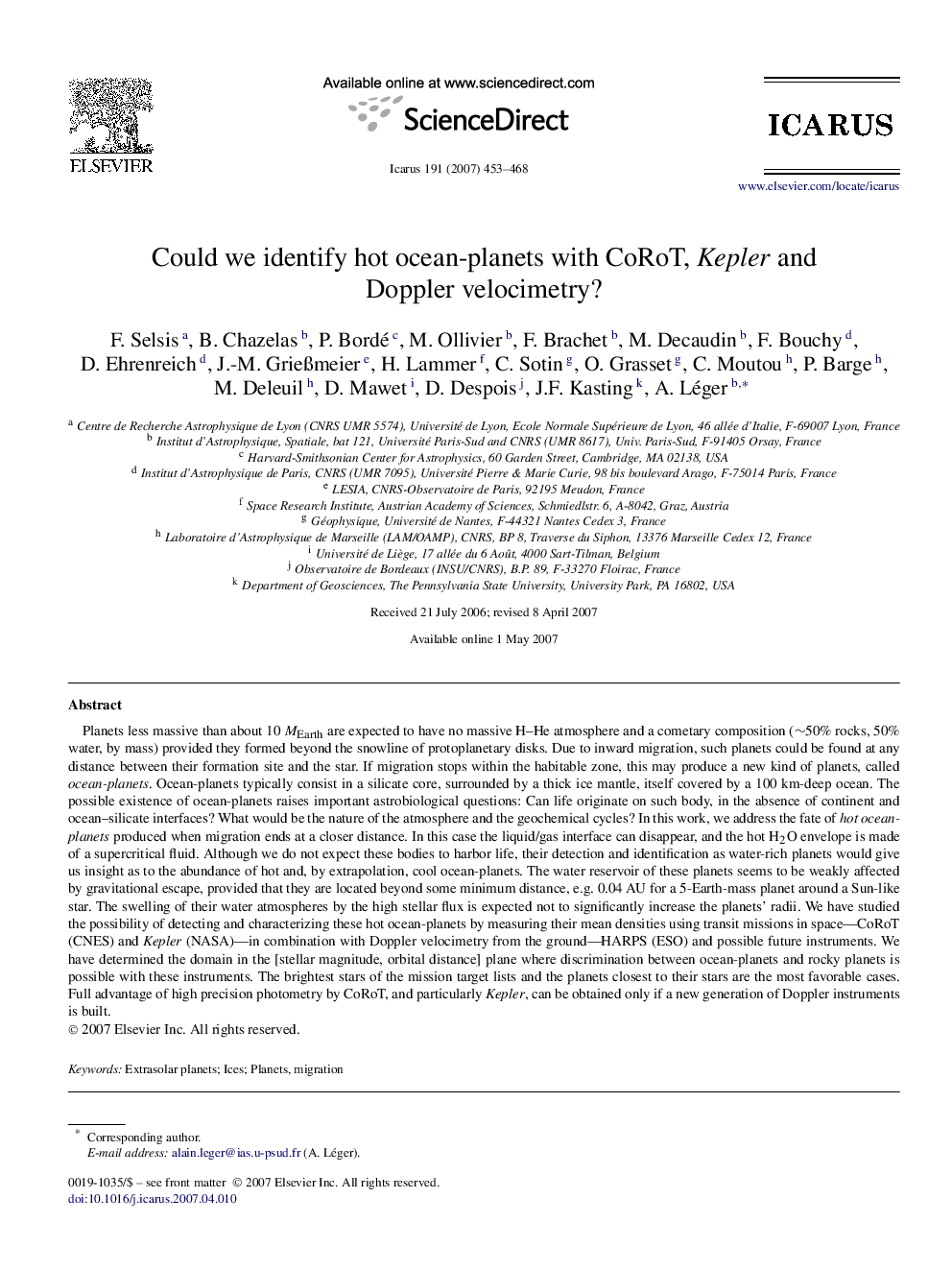| Article ID | Journal | Published Year | Pages | File Type |
|---|---|---|---|---|
| 1775466 | Icarus | 2007 | 16 Pages |
Planets less massive than about 10 MEarthMEarth are expected to have no massive H–He atmosphere and a cometary composition (∼50% rocks, 50% water, by mass) provided they formed beyond the snowline of protoplanetary disks. Due to inward migration, such planets could be found at any distance between their formation site and the star. If migration stops within the habitable zone, this may produce a new kind of planets, called ocean-planets. Ocean-planets typically consist in a silicate core, surrounded by a thick ice mantle, itself covered by a 100 km-deep ocean. The possible existence of ocean-planets raises important astrobiological questions: Can life originate on such body, in the absence of continent and ocean–silicate interfaces? What would be the nature of the atmosphere and the geochemical cycles? In this work, we address the fate of hot ocean-planets produced when migration ends at a closer distance. In this case the liquid/gas interface can disappear, and the hot H2O envelope is made of a supercritical fluid. Although we do not expect these bodies to harbor life, their detection and identification as water-rich planets would give us insight as to the abundance of hot and, by extrapolation, cool ocean-planets. The water reservoir of these planets seems to be weakly affected by gravitational escape, provided that they are located beyond some minimum distance, e.g. 0.04 AU for a 5-Earth-mass planet around a Sun-like star. The swelling of their water atmospheres by the high stellar flux is expected not to significantly increase the planets' radii. We have studied the possibility of detecting and characterizing these hot ocean-planets by measuring their mean densities using transit missions in space—CoRoT (CNES) and Kepler (NASA)—in combination with Doppler velocimetry from the ground—HARPS (ESO) and possible future instruments. We have determined the domain in the [stellar magnitude, orbital distance] plane where discrimination between ocean-planets and rocky planets is possible with these instruments. The brightest stars of the mission target lists and the planets closest to their stars are the most favorable cases. Full advantage of high precision photometry by CoRoT, and particularly Kepler, can be obtained only if a new generation of Doppler instruments is built.
